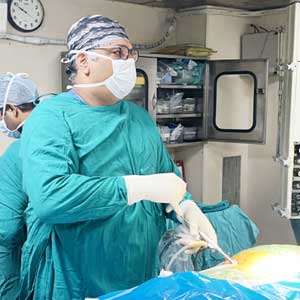Minimally Invasive Spine Surgery
The goal of minimally invasive spine surgery is to stabilize vertebral bones and spinal joints and relieve pressure that is applied to spinal nerves. Such condition occurs due to the issue of spinal instability, herniated discs, bone spurs, scoliosis or spinal tumors.
The most advance and latest technology, minimally invasive spine surgery means a smaller incisions, smaller scars, reduced blood loss and shorter accommodation at hospital. In a contrary to open spine surgery, invasive surgery treatment option offers faster, safer and less recovery time. As compare to open spine surgery, it provide reduced trauma to the muscles and soft tissues.

Benefits of minimal invasive spine surgery
Open spine surgery might be a good option in different individual cases, minimal invasive surgery provide you an appropriate and best option. The benefits include
- Smaller skin incisions (sometime as small as 2 cm) or scars
- Lesser blood loss during surgery
- Quick recovery time
- Lesser amount of pain medication needed during hospital stay
- Since it involves less or no cutting of muscles as a result there is reduced risk of muscles damage.
- Shorter stay at hospital and lesser rehabilitation period
Condition that can be treated using minimally invasive surgery (MIS) surgery
- Degenerated disc diseases
- Lumbar spinal stenosis
- Herniated discs
- Spinal tumors
- Vertebral compression fractures
- Spinal instability
- Spinal infection
- Scoliosis (spinal deformity)




